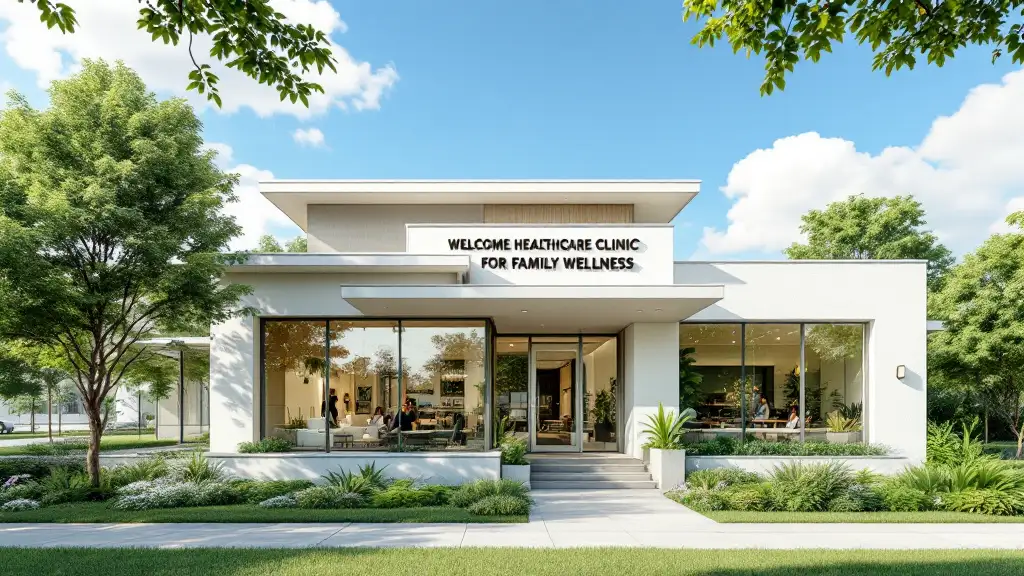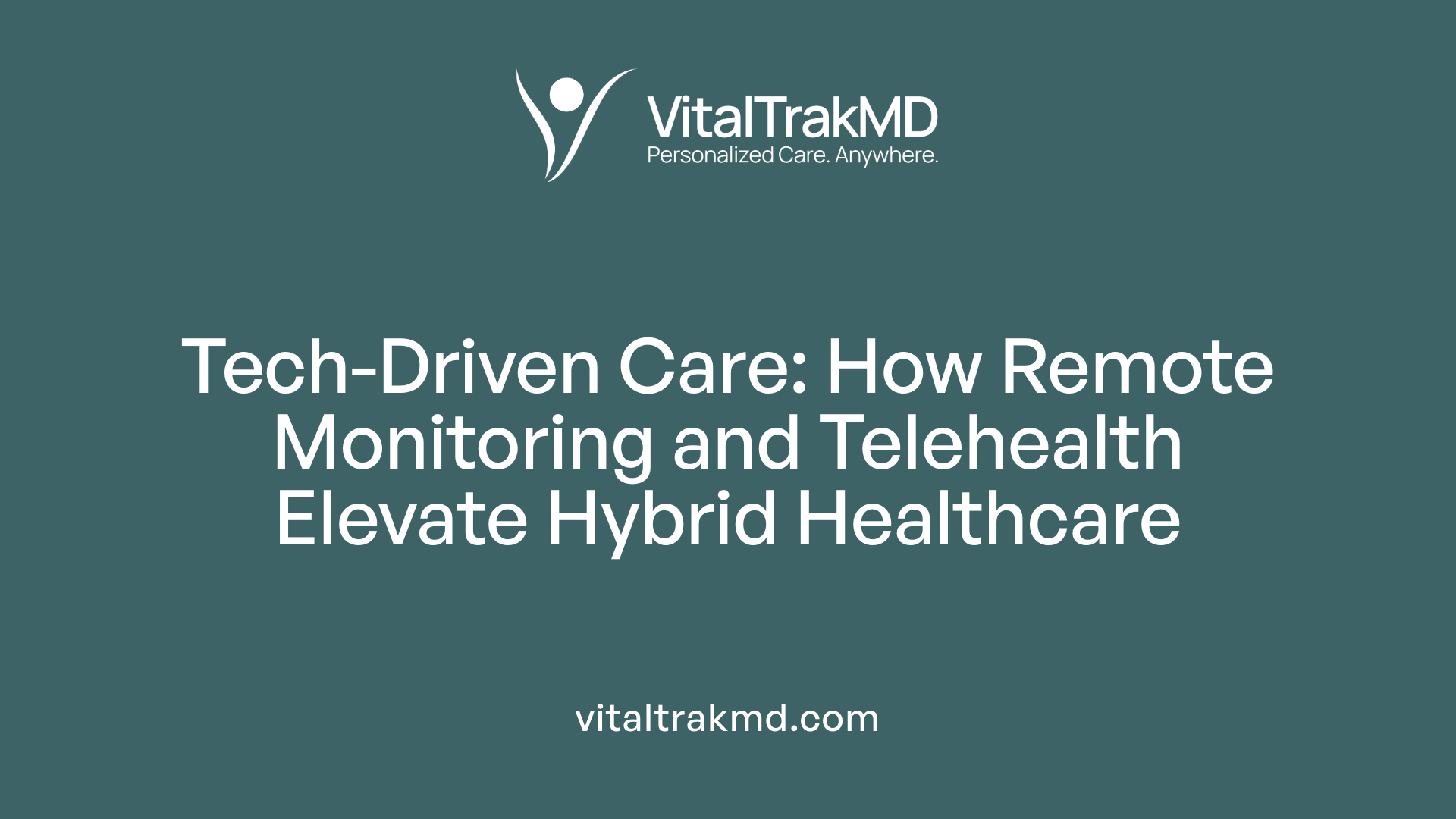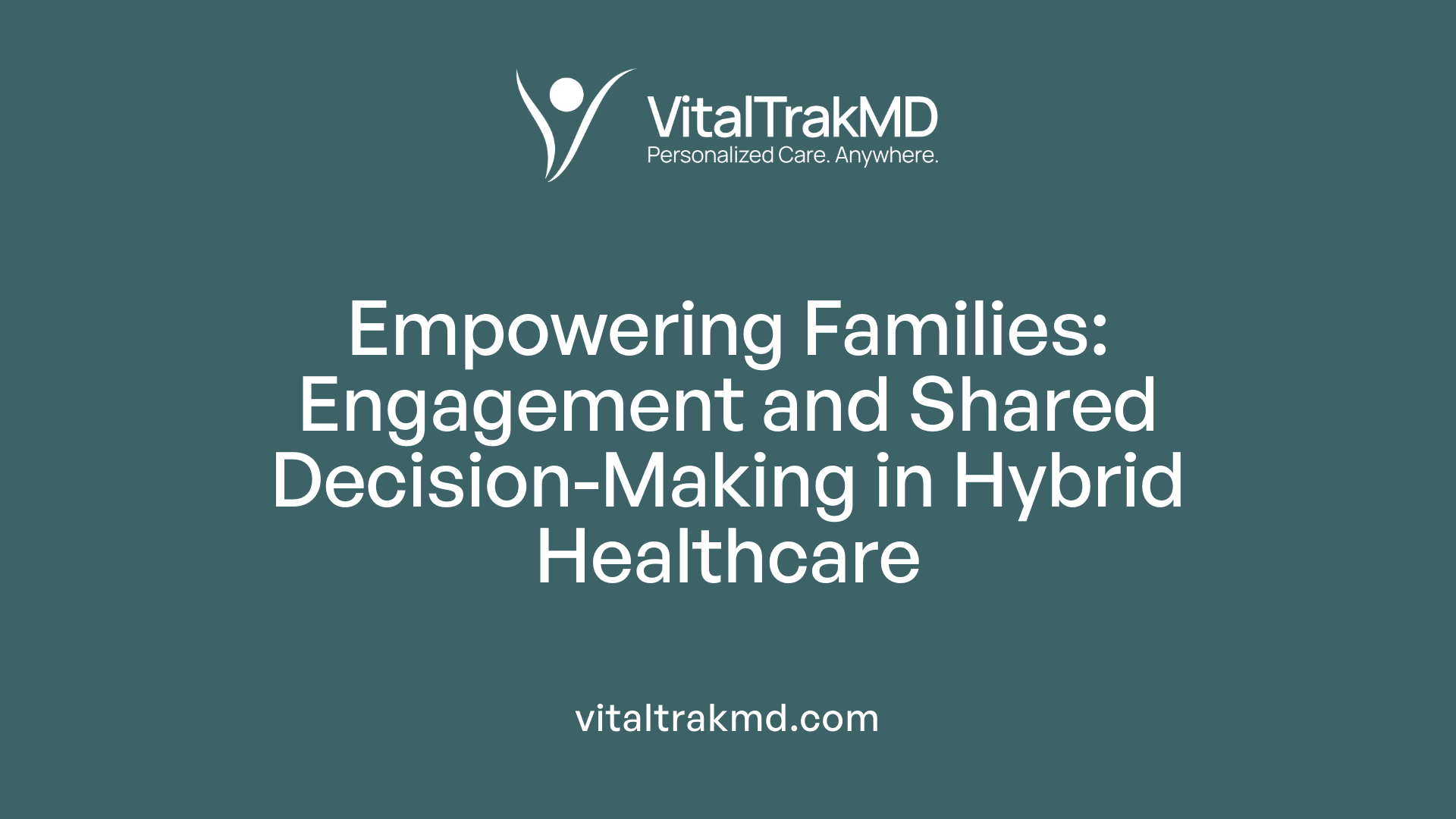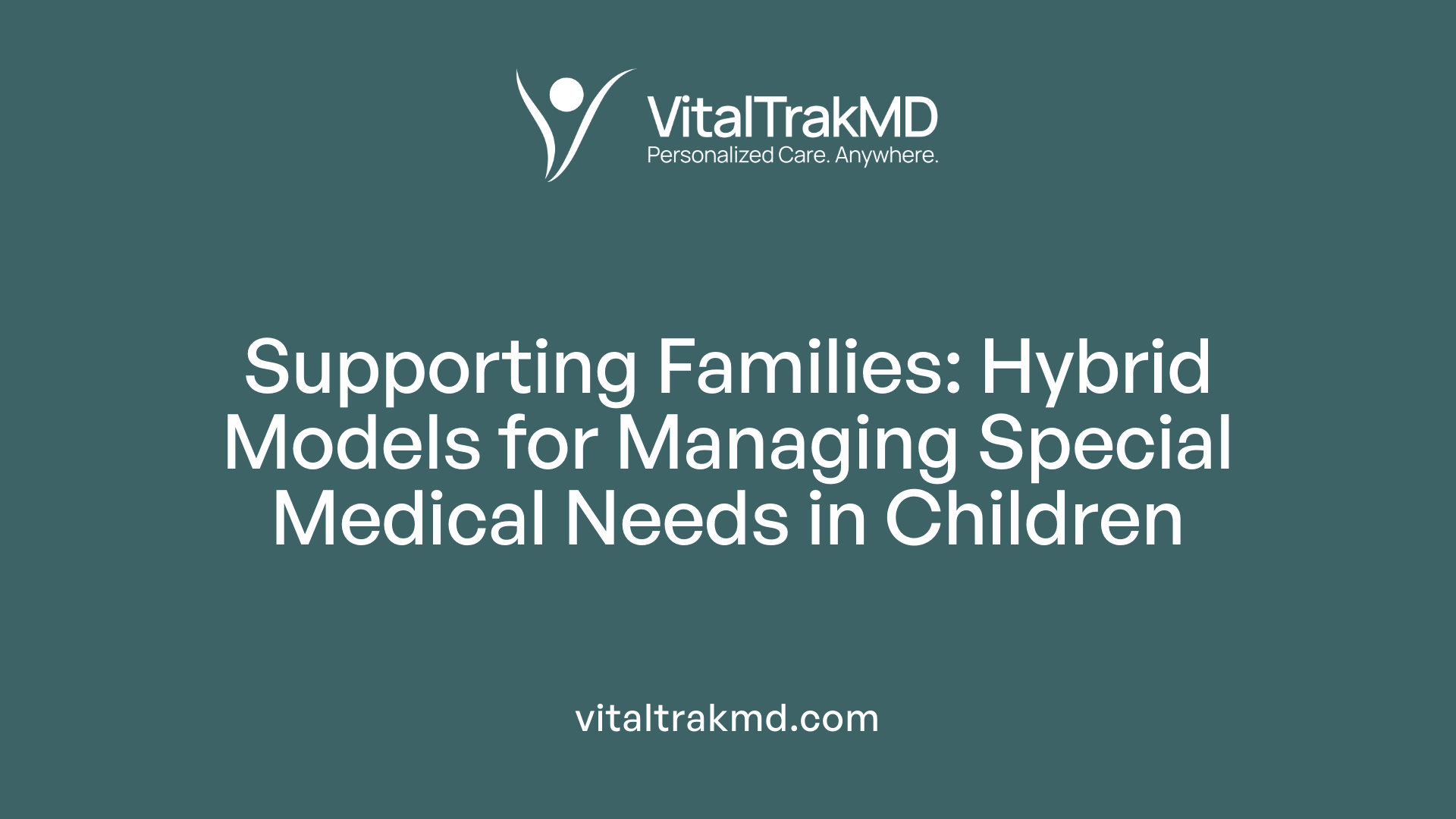How Hybrid Healthcare Supports Families in Coordinating Care

Enhancing Family-Centered Care with Innovative Hybrid Solutions
The evolution of healthcare delivery into hybrid models—combining in-person and remote services—has revolutionized how families manage and coordinate care for children, especially those with complex medical needs. These models foster collaboration, improve access, and promote personalized, flexible care pathways that meet individual family and patient needs, ushering in a new era of family-centered, efficient health systems.
The Rise of Hybrid Care Models and Their Foundations

What are hybrid healthcare models?
Hybrid healthcare models represent an innovative approach to delivering medical care by combining traditional in-hospital treatment with remote, at-home services. This model manages inpatient hospital care alongside home-based care tailored to the patient's specific medical needs. It leverages digital health solutions—including telehealth, remote monitoring devices like TytoCare kits and ECG sensors, and digital platforms—to expand care pathways across different modes and locations. The goal is to offer more flexible, personalized, and convenient healthcare options that enhance patient outcomes and satisfaction.
How did COVID-19 accelerate hybrid healthcare adoption?
The COVID-19 pandemic acted as a catalyst for this transformation, prompting widespread digital adoption across healthcare systems. To limit the spread of the virus and manage capacity challenges, many institutions rapidly integrated virtual solutions into their care plans. This shift led to the development of hybrid models such as remote hospital care and hospital-at-home programs. Remote monitoring technologies, including portable x-ray machines, Vital Signs sensors, and telemedicine platforms, became essential tools. Their implementation facilitated continuous patient oversight while minimizing physical hospital stays. As a result, healthcare providers could adapt quickly, ensuring ongoing care delivery even during crises.
Broader implications
These models have significantly impacted healthcare by increasing system resilience, supporting patient-centered care, and improving operational efficiency. They enable early discharge, reduce readmission rates, and provide scalable solutions suitable for both urban and rural settings. The integration of physical and virtual pathways marks a major shift towards flexible, accessible healthcare, promising ongoing benefits beyond the pandemic context.
Benefits of Hybrid Healthcare for Children with Complex Needs

What are the benefits of hybrid healthcare approaches for children with complex medical needs?
Hybrid healthcare models combine in-person and remote care services to create a more flexible and comprehensive approach for children with complex health conditions. This integration allows for better coordination among multiple healthcare providers, ensuring that children receive consistent, continuous care regardless of their location.
One of the primary advantages is improved access to specialized care. Families in remote or underserved areas can connect with expert providers through telemedicine, reducing the need for travel and making it easier to maintain regular appointments. This accessibility is crucial for children with chronic diseases or conditions that require frequent monitoring.
Family involvement is central to hybrid care. Shared care plans and real-time communication enable parents and caregivers to participate actively in decision-making, fostering a sense of empowerment and collaboration. Such engagement not only improves adherence to treatment plans but also enhances family satisfaction and confidence in managing the child's health.
Hybrid models also help overcome logistical and financial barriers. By decreasing the need for physical visits, families save on transportation costs and reduce time away from work or school. These models can lead to cost savings for healthcare systems by decreasing emergency visits and hospital admissions, making care more sustainable.
Research and real-world implementations, such as at UMass Memorial and Sheba Medical Center, demonstrate that these approaches can maintain or even improve health outcomes. They facilitate early interventions, support mental health needs, and enable personalized care tailored to the child's unique circumstances.
In summary, hybrid healthcare approaches deliver tailored, accessible, and family-centered care. They optimize resource utilization, support comprehensive management of complex conditions, and promote better health and quality of life for children with special medical needs.
Technology-Enabled Care Enhancement through Remote Monitoring and Telehealth

How do remote care technologies, telehealth, and virtual support systems enhance hybrid healthcare?
Remote care technologies, telehealth, and virtual support systems play a pivotal role in advancing hybrid healthcare models. They enable real-time communication between patients and providers, allowing for immediate assessments and consultations no matter where the patient is located. This continuous connectivity ensures that children with complex medical needs receive consistent attention, whether they are at home or in a healthcare facility.
Remote monitoring devices such as vital signs sensors, portable x-ray units, and TytoCare kits allow clinicians to gather accurate, up-to-date health data remotely. These tools facilitate ongoing management of chronic conditions, early detection of complications, and effective social and medical intervention, which are crucial for children with intricate health needs.
Virtual systems also support mental health care, medication reviews, and family education, fostering a more engaged and informed patient and family. During crises like COVID-19, these technologies proved essential for maintaining care continuity, reducing hospital visits, and managing health more flexibly. They help bridge geographical gaps, especially in rural or underserved communities, making healthcare accessible and efficient.
Integrating telehealth with traditional in-person care enables personalized treatment plans, improves patient satisfaction, and supports resource optimization. Ensuring robust technological infrastructure, training healthcare professionals, and creating supportive policies are fundamental to maximizing these benefits within hybrid healthcare systems.
What technological tools support hybrid care models?
A range of digital tools and devices bolster hybrid care pathways. Health information exchange standards like HL7 and FHIR enable seamless sharing of patient data across different systems and platforms, promoting coordinated and safe care.
Advanced AI-driven analytics assist in decision-making by analyzing data from remote devices and monitoring systems, enabling early interventions and tailored treatment plans.
Remote examination devices, such as TytoCare kits, allow clinicians to perform thorough assessments virtually, improving diagnosis accuracy without physical proximity.
Vital signs sensors, portable x-ray units, and digital platforms facilitate continuous health monitoring, streamline clinical workflows, and enhance team communication.
These tools collectively support a comprehensive, flexible approach to healthcare, allowing providers to adapt swiftly to changing clinical needs while ensuring safety and high-quality care.
Addressing technological challenges
Despite the advantages, implementing remote monitoring and telehealth comes with challenges. System interoperability remains a significant barrier, making it difficult to share data seamlessly across different platforms. Data security and patient privacy are other concerns, especially with increasing cyber threats and sensitive health information.
Ensuring reliable internet connectivity and access to digital devices is essential, particularly in rural or low-resource settings where infrastructure may be limited.
Training healthcare professionals to use new technologies effectively and educating families and patients about digital tools are vital steps for successful adoption.
Addressing these technological hurdles requires coordinated efforts among healthcare providers, policymakers, and technology developers to create secure, interoperable, and user-friendly systems that support equitable hybrid care.
| Aspect | Technologies and Solutions | Challenges |
|---|---|---|
| Communication | Teleconsultations, virtual portals, secure messaging | Interoperability issues |
| Monitoring | Vital signs sensors, remote exam kits, digital platforms | Data security, device access |
| Data Management | HL7, FHIR standards, integrated analytics | System integration, privacy concerns |
| Support Features | AI analytics, decision support, virtual presence | Infrastructure, training needs |
In summary, integrated technological tools reshape pediatric hybrid healthcare by making it more accessible, personalized, and efficient. Overcoming current obstacles will further enhance the potential of remote monitoring and telehealth to deliver family-centered, resilient healthcare systems.
Family Engagement and Shared Decision-Making in Hybrid Care

How do hybrid healthcare models facilitate family involvement and care coordination?
Hybrid healthcare models significantly enhance family participation by utilizing digital platforms such as telemedicine, remote monitoring devices, and virtual communication tools. These technologies enable families to be actively involved in developing care plans, making decisions, and managing ongoing health needs even from a distance.
During home hospitalizations or post-discharge phases, families can easily connect with healthcare providers through virtual consultations. This real-time interaction allows families to receive vital health information, clarify medical instructions, and participate in shared decision-making processes.
Such models foster better information exchange and collaboration between families and clinical teams, which improves understanding, adherence to treatment, and emotional support. For instance, remote monitoring devices provide families with continuous updates on their child's condition, empowering them to act promptly if issues arise.
Involving families through digital means not only simplifies communication but also accommodates their schedules and environments, making care more accessible and responsive. This approach supports a sense of partnership, reduces anxiety, and promotes engagement, leading to better health outcomes.
By integrating physical care with virtual elements, hybrid models create flexible, patient-centered pathways that adapt to individual family needs and preferences. This ongoing inclusion helps build trust and encourages families to become active participants, which is especially important in managing complex health conditions in children.
Virtual communication platforms for families
Virtual platforms like secure video calls, patient portals, and messaging apps serve as the backbone of family engagement in hybrid care. These tools offer real-time communication, educational resources, and easy access to medical records, promoting transparency and involvement.
Involvement in care planning and decision-making
Families can contribute to care strategies during virtual meetings, provide feedback via digital surveys, and participate in shared decision-making discussions, ensuring care aligns with their values, preferences, and home environments.
Overcoming barriers to family engagement
Challenges such as technology access, digital literacy, and language barriers can hinder participation. Addressing these issues requires tailored training, multilingual platforms, and providing necessary devices or internet support to ensure equitable involvement.
| Aspect | Description | Additional Support Needed |
|---|---|---|
| Technology Access | Ensuring families have devices and internet connectivity | Devices, subsidies, community support |
| Digital Literacy | Educating families on using platforms effectively | Tutorials, tech support |
| Language Barriers | Multilingual services for non-English speakers | Translators, multilingual platforms |
By addressing these barriers, healthcare providers can foster more inclusive and effective family engagement, ultimately improving the quality and outcomes of hybrid care programs.
Addressing the Needs of Families Managing Special Medical Cases

How do hybrid healthcare models specifically address the needs of families managing care for children with special health needs?
Hybrid healthcare models offer a flexible and comprehensive approach to meet the complex needs of children and youth with special health requirements. These models combine in-person visits with remote services, creating a seamless care pathway that improves access, convenience, and continuity.
For families, hybrid models support continuous engagement through tailored care plans that adapt to individual health conditions. Initial face-to-face interactions establish trust, help troubleshoot technical issues, and set personalized treatment strategies. Follow-up and ongoing support are delivered through telehealth or virtual platforms, allowing families to participate from home without frequent hospital visits.
This approach benefits families by reducing physical and emotional stress often associated with managing frequent hospital or clinic appointments. It fosters family involvement in decision-making and care coordination, ensuring that the child's specific needs and preferences are central to the care plan.
Evidence-based therapies, such as Cognitive Behavioral Therapy (CBT), are frequently incorporated into hybrid models, especially in mental health care. These therapies emerge as effective options supporting family-centered outcomes like satisfaction, improved therapeutic relationships, and clinical improvements.
Moreover, remote monitoring tools and digital platforms enable real-time communication between families and healthcare providers. This digital integration ensures early detection of health issues, timely intervention, and consistent support, which are vital for preventing complications and promoting resilience.
By facilitating better engagement and more personalized care, hybrid healthcare models not only improve health outcomes but also empower families, helping them navigate the complex medical landscape more confidently. Overall, these models align with broader goals of creating equitable, family-centered care systems that foster better health and well-being for children with special needs.
Supporting Family-Centered Care and Co-Creation of Health Plans

Principles of family-centered care
Family-centered care emphasizes respecting and involving families as active partners in the child's healthcare journey. It focuses on honoring family preferences, fostering ongoing communication, and providing support tailored to each child's and family's unique context. This approach recognizes families as vital members of the care team, ensuring their insights and wishes influence medical decisions.
Collaborative care planning
Effective care plans are developed through shared decision-making processes, where healthcare providers and families work together to set goals and determine the best course of action. Hybrid care models enhance this collaboration by combining in-person visits with virtual interactions, making it easier for families to participate regardless of geographical or time constraints.
Technology-facilitated co-creation
Digital tools such as secure video platforms, patient portals, and remote monitoring devices facilitate ongoing communication and information sharing between families and healthcare teams. These technologies enable families to stay engaged, access vital health data, and actively contribute to care adjustments from home, increasing their involvement in co-creating personalized health strategies.
How hybrid healthcare supports family involvement
Hybrid healthcare models foster active family participation by providing flexible modes of engagement. Families can attend virtual team meetings, review digital care plans, and communicate with providers through telehealth solutions, all of which support transparent and respectful exchanges. This accessibility empowers families to manage their children's care more effectively.
Enhancing trust through shared experiences
Integrating both physical and virtual interactions allows healthcare teams to build stronger relationships with families. Co-creation becomes a collaborative process where providers incorporate families' lived experiences, leading to care plans that are more empathetic and responsive.
Improving health outcomes
When families are partners in care, adherence to treatment plans improves, and children experience better health outcomes. Hybrid models reinforce this partnership by making healthcare more accessible, personalized, and adaptable, ultimately supporting a holistic approach that aligns with family values and needs.
Strategies for Implementing and Managing Hybrid Care Systems

What strategies and best practices are recommended for implementing and managing care within hybrid health systems?
Successfully integrating hybrid health systems involves a strategic blend of clinical, technological, and organizational approaches. First, seamless integration of clinical workflows with digital tools—such as telehealth platforms, remote patient monitoring devices, and electronic health records—is essential. These systems must be flexible, allowing providers to transition smoothly between in-person and virtual visits based on patient needs and clinical criteria.
Implementing established frameworks like RE-AIM (Reach, Effectiveness, Adoption, Implementation, Maintenance) and CFIR (Consolidated Framework for Implementation Research) can guide the structured development, evaluation, and continuous refinement of hybrid models. These frameworks help identify barriers and facilitators, ensuring that innovations are sustainably embedded into practice.
Operational efficiency also depends on deploying clear protocols and efficient scheduling systems that support both physical and virtual care pathways. Infrastructure tailored to hybrid needs—such as dedicated virtual consultation rooms, virtual beds, and adaptable physical spaces—further enhances service delivery.
Research-backed approaches, including randomized controlled trials and effectiveness-implementation studies, should be employed to optimize strategies, address barriers, and accelerate the translation of these innovations into routine care. Regular feedback from patients and providers is critical for iterative improvement, ensuring that hybrid models stay responsive and effective.
How do healthcare providers coordinate care effectively within hybrid systems?
Care coordination in hybrid systems hinges on robust communication and shared information platforms. Interoperable digital health records allow seamless access to patient data across different settings and providers, minimizing fragmentation.
Multidisciplinary teams—comprising in-person clinicians, virtual nurses, and remote monitoring specialists—are critical for maintaining continuity. These teams coordinate through real-time communication tools, task management platforms like iCare Coordinator, and virtual care workflows.
Designing flexible healthcare environments supports this coordination, where physical spaces are optimized for hybrid use with features like private virtual consultation rooms and adaptable bed configurations. Additionally, workflows should incorporate patient engagement tools such as online scheduling and telehealth portals, fostering active participation and timely access.
The use of advanced AI, data analytics, and remote monitoring technologies helps providers identify care gaps, predict deterioration, and adjust interventions promptly. Building a collaborative culture among providers, leveraging technology, and emphasizing transparent communication are fundamental for efficient, patient-centered care in hybrid systems.
Impact of Hybrid Healthcare on Health System Transformation

What is the impact of hybrid healthcare on health system transformation and collaborative workflows?
Hybrid healthcare fundamentally reshapes how health systems operate by integrating physical and virtual care modalities. This approach fosters more collaborative, interconnected workflows that allow care to be delivered seamlessly across different settings, whether in hospitals, clinics, or in patients’ homes.
A primary impact of this transformation is the acceleration of digital adoption. Telemedicine, remote monitoring technologies, and digital health platforms become central, enhancing treatment flexibility and improving resource allocation. Hospitals like Sheba Medical Center in Israel and programs like Mayo Clinic’s Advanced Care at Home exemplify how remote technologies—such as virtual command centers, telehealth, and remote patient monitoring—support high-quality, continuous care outside traditional settings.
In terms of infrastructure, health facilities are reconfigured to support hybrid models. Physical spaces are adapted by reducing the number of beds, increasing private rooms, and creating virtual beds and communication zones, making hospitals more adaptable to fluctuating demands. For instance, hospitals are designing for flexibility by incorporating control centers and virtual care areas, which improve operational resilience.
For healthcare staff, hybrid models promote organizational efficiency and staff well-being. OU Health’s hybrid nursing model integrates virtual and bedside teams to optimize workload and reduce burnout. Virtual nurses handle non-clinical tasks such as patient education and care coordination, freeing bedside nurses to focus on direct patient care.
Overall, hybrid healthcare fosters a more resilient, efficient, and patient-centered system. It supports equitable access by balancing in-person and remote services, enhances team collaboration, and prepares health systems for future challenges through innovative workflows and infrastructure, leading towards a sustainable and responsive health environment.
A Future of Connected and Resilient Pediatric Care
The integration of hybrid healthcare models into pediatric care systems represents a transformative step toward more connected, family-centered, and resilient health solutions. By harnessing advanced digital technologies, fostering collaboration between families and providers, and redesigning healthcare structures to support flexible delivery modes, healthcare systems can significantly improve care quality, accessibility, and outcomes for children with complex medical needs. As these models continue to evolve, continuous innovation, stakeholder engagement, and infrastructure development will be crucial in creating sustainable, equitable care pathways that adapt to the dynamic needs of families. Embracing hybrid healthcare paves the way for a future where families are active partners—ensuring children receive the coordinated, compassionate, and comprehensive care they deserve, anytime and anywhere.
References
- Combining Home Nursing with Medical Daycare
- Designing for flexibility in hybrid care services - PubMed Central
- OU Health Launches Groundbreaking Hybrid Nursing ...
- Implementation of a virtual and in-person hybrid hospital-at ...
- Continuity and care coordination of primary health care
- Families as Partners: Transforming Child Health Care ...
- Hybrid Care Archives - Caregility
- Brief: Supporting Families Through Coordinated Services ...
Recent articles
Want to Feel Better and Live Healthier?
Join hundreds of patients taking control of their health with personalized care that fits their life – not the other way around.
Rated 4.8/5 by 32+ customers







